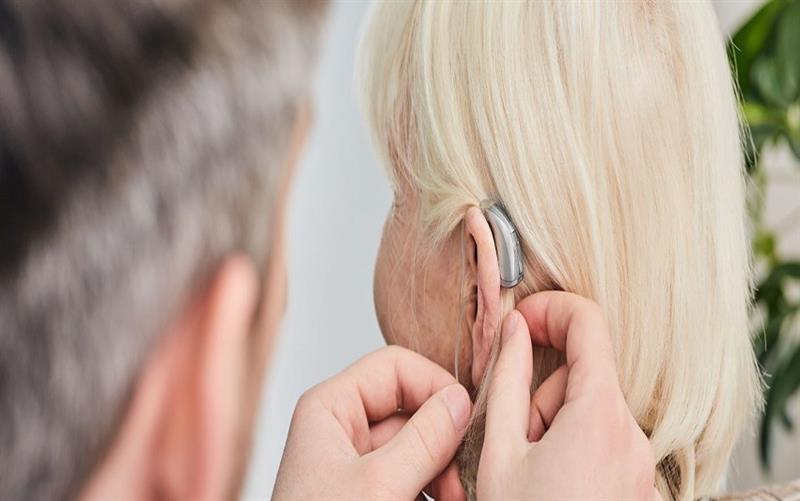
Hearing loss is a common problem that affects millions of people worldwide. While hearing aids can help improve hearing and quality of life, getting fitted for a hearing aid can seem overwhelming. The hearing aid fitting process is an essential step towards improving your hearing and enjoying the benefits of better hearing.
The hearing aid fitting process is an important step towards improving your hearing and quality of life. It involves a hearing evaluation, hearing aid selection, hearing aid fitting, follow-up appointments, and hearing aid maintenance. By working with a qualified audiologist or hearing healthcare professional, you can ensure that you receive the best possible hearing care and enjoy the benefits of better hearing. If you have noticed a decline in your hearing ability, don't hesitate to schedule an appointment with an audiologist to explore your options for improving your hearing.
In this blog post, we will discuss what the hearing aid fitting process entails and what you can expect during your fitting appointment.
Step 1: Hearing Evaluation
The first step in the hearing aid fitting process is a hearing evaluation. This is done by an audiologist or hearing healthcare professional. The evaluation will determine the degree and type of hearing loss you have, which will help the audiologist determine the appropriate type of hearing aid for you. The evaluation typically involves a hearing test, where you will be asked to listen to sounds at various volumes and frequencies. You may also be asked to repeat words or sentences.
Step 2: Hearing Aid Selection
Once the audiologist has determined the type and degree of hearing loss you have, they will recommend a specific type of hearing aid. There are many different types of hearing aids, each with its own unique features and benefits. The audiologist will consider your lifestyle, hearing needs, and budget when recommending a hearing aid. They may also recommend accessories, such as a remote control or a streamer that connects to your phone or TV.
Step 3: Hearing Aid Fitting
Once you have selected a hearing aid, the audiologist will take impressions of your ears. These impressions will be used to create custom earmolds or shells for your hearing aids. The earmolds or shells are important because they help to ensure that the hearing aids fit securely in your ears and provide the best possible sound quality.
Once the earmolds or shells have been created, the audiologist will fit your hearing aids. They will adjust the settings on the hearing aids to match your specific hearing loss and preferences. This process is called programming. The audiologist will also show you how to use your hearing aids and how to care for them properly.
Step 4: Follow-Up Appointments
After your initial fitting, you will likely have follow-up appointments with your audiologist. These appointments are important because they allow the audiologist to make any necessary adjustments to your hearing aids. You may need to have your hearing aids reprogrammed or have the earmolds or shells adjusted. The audiologist will also check the fit of your hearing aids to make sure they are still comfortable and providing the best possible sound quality.
Step 5: Hearing Aid Maintenance
Proper hearing aid maintenance is essential for ensuring that your hearing aids continue to function properly. Your audiologist will show you how to clean and care for your hearing aids. They may also recommend accessories, such as a dehumidifier, to help keep your hearing aids in good condition. It is important to follow the maintenance instructions provided by your audiologist to ensure the longevity and performance of your hearing aids.
How To Find Best Hearing Aid?
Finding out what you need from your experience and evaluating your requirements are the first steps in selecting a hearing aid. You may have the chance to share your thoughts on the matter during a thorough discussion. Your choice of hearing aids may be influenced by a number of variables, including:
1. Getting Test Outcomes:
The options accessible to you depend on how severe your hearing loss is, so be sure to talk to your hearing care professional about your audiogram results (HCP). For instance, some models made for mild or moderate hearing loss may not work for individuals with profound hearing loss. What models will produce the best outcomes for you will be explained by your HCP.
2. Preferences :
You can investigate the options with your HCP if you have a preference for a particular style of hearing aid. Although not everyone can use every type of hearing aid, as was already stated, your preferred shape may be among your options. If you have a specific hearing aid in mind, be sure to mention it.
3. Lifestyle :
You might want a hearing device that can keep up with your active and social lifestyle. On the other hand, people who don't require additional accessories and functions might choose a hearing aid that is less complicated. Don't forget to discuss your lifestyle, goals, and objectives for your new hearing aid.
4. Previous Encounters :
You may have strong views about what you want from your new hearing aids if you've used them in the past. Your wish list might include new features, improved sound quality, or a different shape or design. Tell your Doctor about your current experience using hearing aids and your goals for enhancing your hearing.
It's ideal to keep yourself as educated with your hearing aids and a new breakthrough in the technology. Ask your query via Book an Appointment today. For more information visit https://hearing.careinc.ca or you can call us today at (403)605-6300